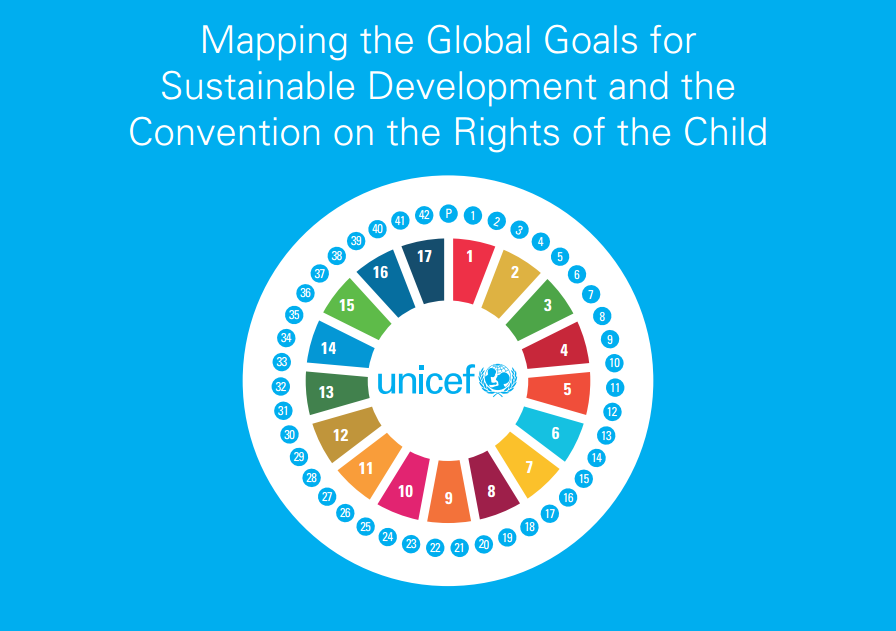 Mapping the Global Goals for Sustainable Development and the Convention on the Rights of the Child
Mapping the Global Goals for Sustainable Development and the Convention on the Rights of the Child
To support implementation of the SDGs and to make sure every child receives a fair chance, UNICEF have launched a new, interactive tool, Mapping the Global Goals for Sustainable Development and the Convention on the Rights of the Child, that shows how all 17 goals and 169 targets are crucial to the wellbeing of children.
Aim. The interactive document aims to encourage an in-depth and broad-based exploration of the links and synergies between the Global Goals for Sustainable Development and the Convention on the Rights of the Child — the global community’s commitment to advancing children’s rights.
All of the Global Goals are relevant for children. This detailed, interactive mapping aims to reinforce, but also to move beyond, the more obvious links between the Global Goals and the Convention – such as in the areas of health, education and violence. It assumes that all of the Global Goals are relevant for children, not only those which specifically refer to children. For example, Goal 9 (Build resilient infrastructure, promote inclusive and sustainable industrialization and foster innovation) corresponds – amongst other things – to Article 29.1(a) and (e) of the Convention (education of the child shall be directed to the development of the child’s personality, talents and mental and physical abilities to their fullest potential and the development of respect for the natural environment), which is seen as essential to the fostering of innovation. Children have the right to directly engage in achieving the Global Goal targets, in terms of claiming their rights now, as children, as well as preparing themselves to take on more complex responsibilities as they grow older. A child who is 4 years old in 2016 will attain adulthood by 2030. Thus the distinction between child- and adult-specific Goals is very fluid.
This mapping also adopts a deliberately broad interpretation of the Global Goals and the Convention. For example, Global Goal target 6.1 (By 2030, achieve universal and equitable access to safe and affordable drinking water for all) corresponds not only to rights relating to discrimination and health, but also to Convention Articles 32 (child labour), 34 (sexual exploitation and abuse) and 36 (other forms of exploitation) in order to draw attention to the ways in which many children are put at risk in the collection of drinking water from distant sources. The intention is to challenge users to look for comprehensive and less obvious connections between the two frameworks so as to reinforce their potential for mutual advocacy and implementation.
We invite you to start exploring the tool here and share it with your colleagues and networks.
 Mapping the Global Goals for Sustainable Development and the Convention on the Rights of the Child
Mapping the Global Goals for Sustainable Development and the Convention on the Rights of the Child